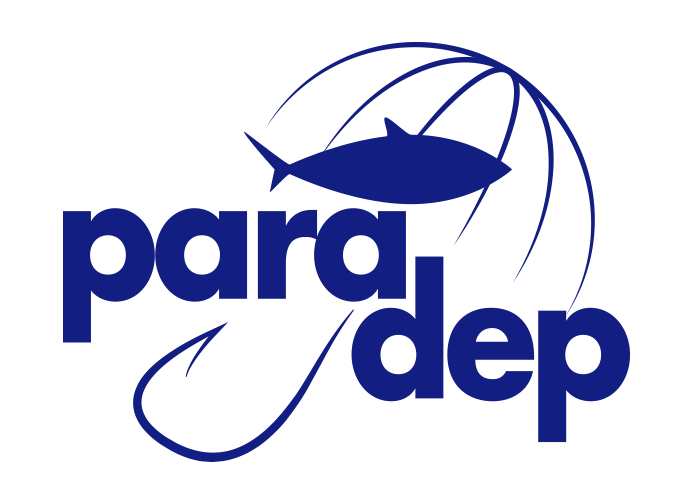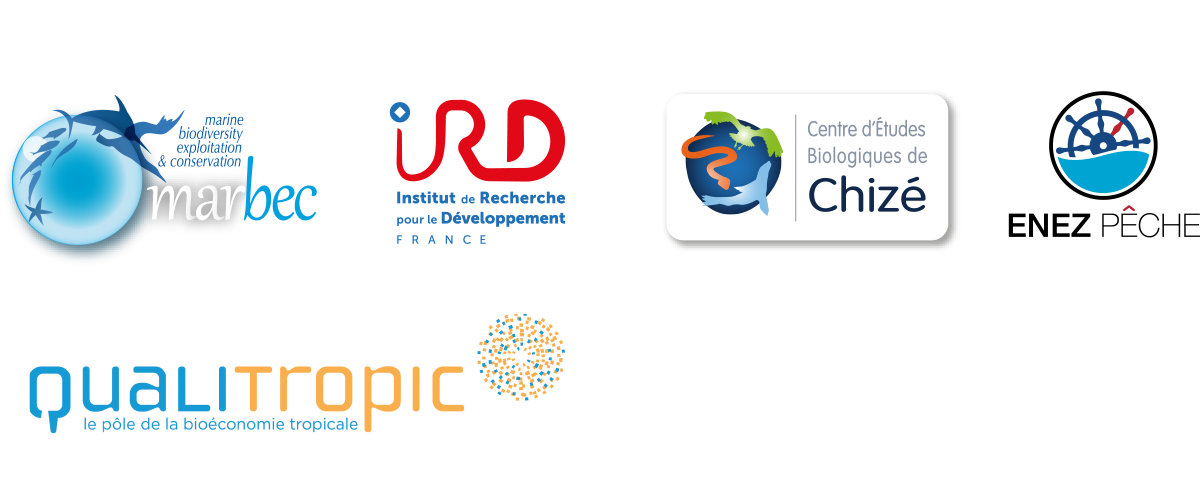Depredation in marine ecosystems is defined as the damage or removal of fish or bait from fishing gear by predators, and more specifically, by toothed whales. It leads to several negative consequences impacting conservation (bycatch of marine mammals, modification of their hunting behaviour), stock assessment (depredated fish not included in fish stock assessment) and fisheries economy (loss of fish). The long term objective of PARADEP is to reduce toothed whale depredation impacting pelagic longline fisheries targeting tuna and swordfish, by developing a physical depredation mitigation device.
The PARADEP project is a unique collaboration between scientists and fishermen. It involves two French labs, whose research focuses on fisheries science (IRD MARBEC) and marine predator ecology (CEBC CNRS), and a pelagic longline fishing company (ENEZ DU, based in Reunion Island, Indian Ocean). It is funded by the European Funds for Maritime Affairs and Fisheries (FEAMP). The project will run for 30 months (July 2018-December 2020). The device conception will take place in Niort (France), and the device trials will take place in the Etang de Thau (Sète, France) and in Reunion Island (Indian Ocean).
The general objective of PARADEP comes in several components including project management (WP1), communication and dissemination (WP2), scientific research (WP3 and WP4) and economic study (WP5).
The communication objective of PARADEP (WP2) is to share the knowledge resulting from the chosen approach to the public, political managers, stakeholders, scientists and fishermen. This will be done by the use of several communication supports, including the construction of a website dedicated to the project (https://paradep.com), the organisation and participation to various workshops, conferences and meetings and fairs, and the publication of scientific papers.
The first scientific objective of PARADEP (WP3: Device conception) includes two sub-objectives. The first one (WP3.1) is to develop a physical depredation mitigation device for pelagic longline fisheries. This innovative device will have three protective skills: a physical protection (physical barrier between the fish and the predator), a visual protection (hiding of the fish) and a passive acoustic protection (modification of the acoustic signature of the fish). This technological innovation will use a passive and non-invasive system by using bio-based materials. It will be deployed around the fish, as soon as it is captured. This device will be developed in collaboration with the SATIM Company, based in Niort (France) and specialized in the design of special machines. The second sub-objective (WP3.2) is to propose further insights into the design of a second device (or into ways of improving the first one). This will be done in collaboration with the LEME laboratory (University of Paris Nanterre, France), specialized in Energetics, Mechanics and Electromechanism.
The second scientific objective of PARADEP (WP4: Device trials and acoustic surveys) includes three sub-objectives. The first one (WP4.1) is to assess the underwater behaviour of the prototype in a shallow basin (Etang de Thau, Sète, France). Once the prototype behaviour is validated, large scale trials will be undertaken in Reunion Island on board pelagic longliners during commercial fishing trips (WP4.2). The third objective is to acoustically monitor the depredation process. Several hydrophones, cameras and accelerometers will be deployed on the fishing gear along with the devices. This will allow to detect toothed whale presence in the vicinity of the longline, to identify the involved species and to analyze their acoustic behaviour when they interact (or not) with the devices (WP4.3).
Along with the device conception, economic study will also be undertaken (WP5). It aims at assessing direct and indirect loss due to depredation in the Reunion Island pelagic longline fishery, based on the fish market price, and the running costs of a fishing trip (bait, fuel, salary). The market position of the device in the area of fishing equipment will also be assessed, based on its estimated price.
At the end of the project, we expect to propose an effective depredation mitigation device which will reduce toothed whale depredation impacts on pelagic longline fisheries. By reducing depredation, resource management and fishermen income will be improved.
Poster (pdf)


